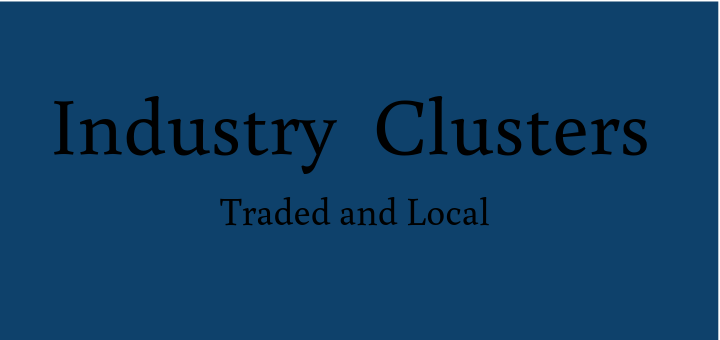
The Memphis & Shelby County Economic Alliance is working together to roll out a new cluster-based strategy for economic development to help capitalize on our region's strengths in specific industries. This handy primer provides an overview of industry clusters - both traded and local - and why they are important to a region's economic prosperity.
What is an industry cluster?
Strong concentrations of related industries in one location are called industry clusters. Industry clusters consist of companies, suppliers, service providers, educational, research and specialized training institutions that support one another. Strong industry clusters in a particular region fuel the regional economy, generate payrolls that can sustain families and create strong innovation. Industry clusters also help position specific regions for uniquely competitive for jobs and private investment.
A strong industry cluster is defined by a cluster that has high employment specialization in a region, a particularly important factor for companies looking to locate or expand their operations in a region.
Two Types of ClusterS: TRaded and Local
Two cluster types make up a regional economy: Traded Clusters and Local Clusters.
Traded clusters provide products and services for cross regional markets and they bring in dollars from outside the region. The dollars generated from traded cluster companies are important to economic growth in the region because they represent new wealth being brought into the area rather than the simple recirculation of wealth already present in the market.

Traded cluster companies have competitors that are typically national or international. Unless proximity to specific natural resources impacts their location choice, they can choose the location of their operations.
Traded clusters are highly geographically concentrated. Typically, traded clusters are present only in markets that offer specific competitive advantages to those industries. Advantages include access to a high concentration of talent that has specialized training, education or skills to support the cluster; infrastructure to meet the cluster’s specific needs and a business environment that supports the cluster’s success.
Some well-known examples include New York’s Financial Services cluster or Silicon Valley’s IT cluster.
Memphis has a strong Transportation, Distribution and Logistics industry cluster because of the city’s central location, infrastructure and high concentration of companies to support the industry. The region’s educational institutions offer specialized training to support the Transportation, Distribution and Logistics cluster’s workforce needs. For example, Southwest Community College offers an international logistics program for specialized training in import/export documentation, an in-demand skill for the region’s many logistics companies who ship goods across the globe.
Local clusters consist of groups of industries that primarily serve the local market. Local clusters are not typically impacted by the competitive advantages of a region or a particular location. The majority of employment in a region comes from local clusters. They are not directly exposed to competition from outside of their direct geography. Some examples of local clusters include local health services like dentists and eye doctors.
If the majority of job growth comes from local clusters, why focus on traded clusters?
The majority of a region’s jobs and job growth comes from its local clusters. However, traded clusters generate higher levels of innovation and offer higher wages. Local clusters typically support the traded clusters in a region. Both cluster types are important to the economic health and vitality of a region’s economy.
Why is cluster-generated innovation important to the economy?
Innovation is an engine of growth. For companies, new products and services or production methods lead to growth. Growth leads to investment, typically in the form of jobs. Growth often generates investment in research and development which results in more innovation, which leads to more new products, service, new production methods, etc. Ideally this cycle repeats itself over and over continuing to propel the economy forward.
Why choose a cluster strategy for economic development?
Cluster collaboration can propel economic growth
A strong collaborative effort between stakeholders in a region’s industry clusters can help strengthen the region’s competitiveness and ultimately economic return for a particular industry. Such collaborations can result in united efforts to drive policy and infrastructure funding and specialized workforce training to help the region protect or grow its competitive advantages in a specific cluster, making it more attractive for more jobs and investment growth.
For example, the Greater Memphis Medical Device Council helps support and strengthen the region’s Medical Device cluster, specifically its orthopedic manufacturing capacities. The organization worked with Greater Memphis Alliance for a Competitive Workforce to secure a grant from the US Department of Labor to develop the MOVE HIRE program. MOVE HIRE a tuition free skills training program that prepares people for careers in the medical device industry.
This blog is part of a series dedicated to helping our members understand some of the terms and concepts associated with our work in economic development. Read more about the Greater Memphis Region's cluster-driven economic development strategy here or view the most recent report to the Memphis & Shelby County Regional Economic Alliance here.
The Greater Memphis Chamber is the lead sales and marketing arm for Economic Development in Memphis & Shelby County. More than 1,100 companies in the Greater Memphis region invest in our work to build prosperity across Memphis. To join, click here.






